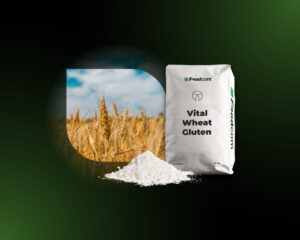EU as one of the world’s leaders in cereal production
Approximately one-fourth of the EU’s wheat crop is exported every year. Half of all cereals produced in the European Union is wheat. Maze and barley remain on lower production levels, yet they are still an important component in total production outcomes. Most of the crop is destined to the animal feed sector, the remaining one-third is meant for human consumption and as little as 3% is dedicated for the purpose to manufacture biofuels. On the other hand, most imported commodities are oilseeds, animal feedstuffs, and rice.
As data published by the Committee for the Common Organisation of Agricultural Markets on the 27th of August referring to the Cereal market situation in the European Union shows, the forecasted production of cereals in Marketing Year 2019/2020 will increase.
Production of cereals will be up by 9,3% on a year-over-year basis, reaching 294,2 million tonnes. The total cereal area will increase as well and is predicted to reach 53,1 million ha, which is 2,3% higher YOY. Soft wheat and barley are expected to get stronger on the market, and the production of such commodities will be recovered. As soft wheat and barley production will steadily increase, the export of so will get firmer as well. Meanwhile, maize and soft wheat imports will decline. Total cereal production varies throughout Europe. A significant increase in so is forecasted to be seen in Poland (31,6 million tonnes of cereal produced in 2020) and Spain (24,1 million tonnes). Year over year variation of production for Poland and Spain will be up, as following: 10,2% and 26,0%. The forecast shows that an apparent reduction in cereal production will happen in France, as it will go down by 16,7% YOY. Such a decrease in the French crop is related to rain deficits and heatwaves that occurred in August 2020 in the region. As data collected by European Commission shows, the time period between the 1st of July to 29th of August 2020, was for many European countries seasons of extreme weather conditions. Rain surpluses in Balcans, rain deficits through central up to western Europe. After the heatwave, came draughts in the western Iberian peninsula and northern Europe. All of the unfavorable weather conditions caused major crop yield to decrease. Yet as the lockdown ceases and there are forecast for weather stabilization, the production of certain commodities seems to be steadily growing.
According to the mentioned report, there has been a steady increase in the global production of vegetable oils in recent years. According to the projection for 2020/2021, the world production of these oils will be around 207 million tons. The production of vegetable oils in Europe accounts for only 7% of the world market and has only seen a small increase in recent years.
Vegetable oil production in the European Union in the first week of September reached 15,2 million tones and such a crop remains on 5 years’ trimmed average. Comparing soybean and sunflower production to the already mentioned trimmed average, they appear to be on similar levels of, as following: 3,2 million tonnes and 4,1 million tonnes. Meanwhile, the production of rape slightly decreased, and at the beginning of September, it reached 7,9 million tones compared to a little above 8 million tones produced in 2019.
Fluctuations in global oilseed production
Production of so is predicted to reach 610 million tonnes in 2020/2021, the highest value in the last 5 years. Such a peak is going to be achieved after a fairly significant drop (below 600 million tonnes) in 2019/2020. These fluctuations are also seen in the production of oilseeds in Europe. In total in 2020/2021, rape, soybean, and sunflower seeds reached 29.1 million tones- that state an agricultural output of similar to the five-year average, but much higher than in the previous year.
Significant and steady growth was also recorded in the production of vegetable meals, and as it is forecasted for 2020/2021 it should reach 348 million tons worldwide (29 million tons in Europe). The biggest part of such production is soybeans. Worldwide production of vegetable meals from soybeans will reach 252 million, the highest value in the last 5 years. During this time, the production of soybean vegetable meals decreased to 10.9 million tonnes in Europe.
The data mentioned above suggest the growing world demand for vegetable products. And world prices of all kinds of oil seeds increased last year. Especially palm oil which was 37% more expensive in 2020 compared to 2019 and also sunflower (about 20%).
As it is presented above EU production of vegetable oils, seeds and meals share only a small part of world production. Meantime the UE + the UK decides about an extensive part of the world consumption of these products and that is why they are a great importer of vegetable proteins based products.








